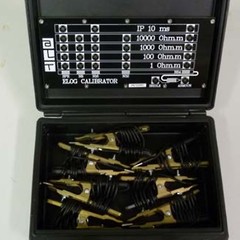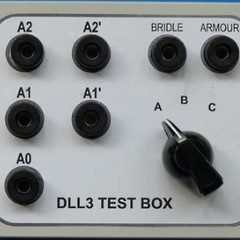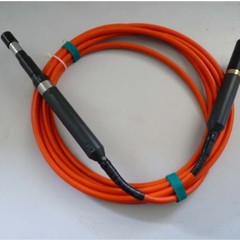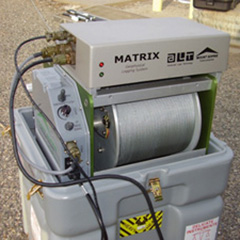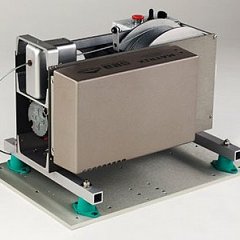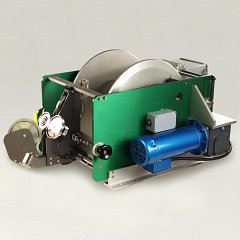QL40-ELOG
from Mt Sopris
The QL40-ELOG Multi-Point Resistivity Probe can be used stand-alone or stacked with other QL tools. It measures normal resistivity, single point resistance (SPR), and self-potential (SP) at multiple intervals. Common stackable probes include the QL40-GR (natural gamma), QL40-FTC-B (temperature/ fluid resistivity), and QL40-CAL (3-arm caliper). Ideal for surveying open fluid-filled boreholes.
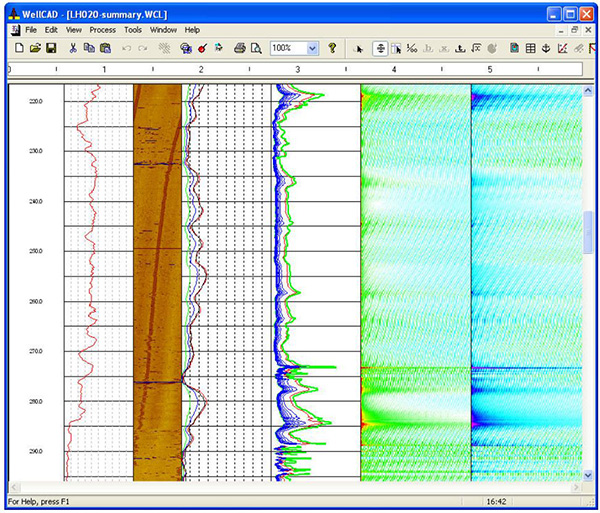
Features
- Offers four resistivity measurements, double the typical two from other manufacturers.
- Slimline design with a 40mm diameter for easy handling.
- Simple one-person operation for efficient deployment.
QL40-IP
The QL40-ELOG can be upgraded to the QL40-IP for chargeability measurements, in addition to SP and SPR readings.
The QL40-IP features two extra digitized channels with 16 to 64-inch potential electrodes and a current electrode (IP charging source). This setup collects injection and relaxation measurements in real time. Each IP channel is subdivided into 10 discrete channels for full waveform data.
Ideal for mineral exploration, the QL40-IP helps map igneous, metamorphic, and iron ore deposits at increasing depths. It can also detect pyrite accumulations around quartz veins in sedimentary formations.
For accurate data, always use the bridle for full isolation during data collection.
Features
- Operates effectively in aqueous and muddy environments.
- Detects fine accumulations of cation-rich layers and identifies chargeability between lithological units.
- Ideal for delineating linear features like faults and microfractures, and used in studies of economic dissemination zones.
QL40-DLL3
The Dual Lateral Log, used alongside the Elog sub or other Quick Link tools, enables simultaneous dual-spaced, focused resistivity measurements at two different depths. The tool works by equating the injected current to the centrally located potential electrode, providing both shallow and deep resistivity readings. Shallow measurements are taken with two guard electrodes, while deep measurements (LL3D) use four guard electrodes and the cable armor. This ensures precise data collection, ideal for geological studies, including investigating bed boundaries, facies, and hydro stratigraphic units, offering excellent vertical resolution.
Features:
- Enables resistivity measurements at two distinct depths for enhanced data analysis.
- Provides excellent vertical resolution, helping determine bed boundaries and hydro stratigraphic units.
Operating Conditions
W - Water √
M - Mud √
D- Dry
S - Steel
P - PVC Borehole
UC- Uncased √
*Centralizers not required
Product Dimensions
| Physical | Dimensions (L x W x H) | Weight |
|---|---|---|
| QL40-ELOG (instrument only) | 208cm x 4.2cm x 4.2cm | 10kg |
Technical Specifications
| QL40- ELOG - Resistivity Probe: | Pressure: 200 Bar (3000 PSI). |
|---|---|
| Operating Temperature: | Up to 70ºC. |
| Sensor: | Stainless steel electrodes, normal array. |
| Accuracy: | 1% F.S. |
| Resolution: | 0.1 Ohm-meters, 0.1 Ohms, 0.1mV. |
| QL40-IP -Induced Polarization Probe: | Dimensions: 190cm long with a 43mm diameter, 9kg weight |
| Max. Temperature and Min. Pressure requirements: | (Max) 70°C 200 bar (Min) |
| Power Requirements: | 120VDC, (Min) 80VDC and (Max) 160VDC ; 32V at up to 500mA current source |
| Electrodes: | 50mm (current), 18mm (measured), 304 stainless steel |
| Spontaneous Potential: | +/- 18V (Range), 0.5mV ( Resolution) and +/- 2.5mV accuracy |
| QL40-DLL3: | A dual spaced focused resistivity probe |
Shipping
| Contents | Dimensions (L x W x H) | Weight |
|---|---|---|
|
Case1
QL40-ELOG and bridle |
215cm x 32cm x 16cm | 30kg |

